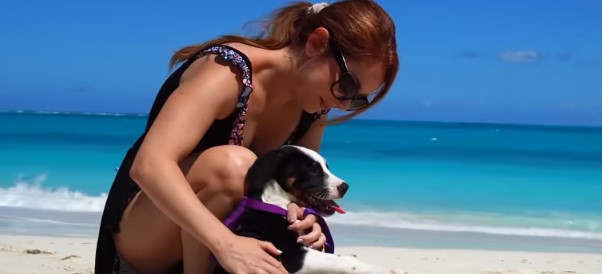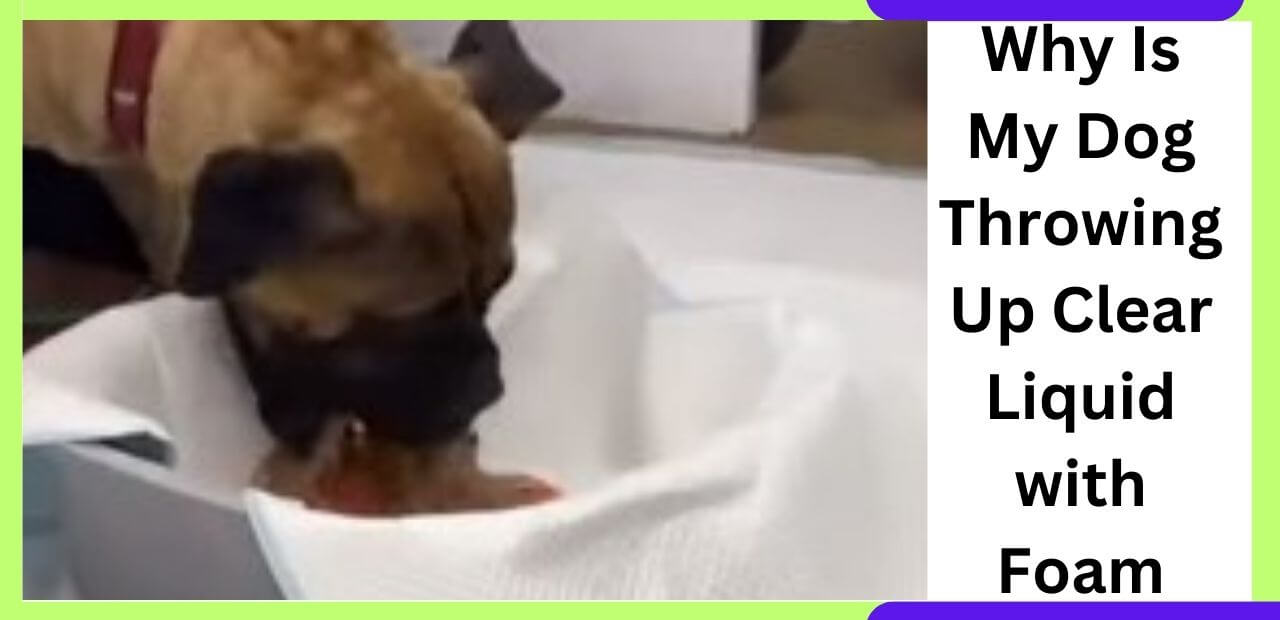As a responsible and caring pet owner, it’s important to understand the various health concerns that can affect our furry friends. One common issue that can be quite alarming is when our dogs start throwing up clear liquid with foam. This article aims to shed light on the potential causes of this phenomenon and provide guidance on how to address it.
Why Is My Dog Throwing Up Clear Liquid with Foam?
Dog vomiting can be an indicator of underlying health problems, and when it involves clear liquid with foam, it can be particularly concerning. While occasional vomiting may not necessarily be a cause for alarm, persistent vomiting or the presence of other symptoms may require veterinary attention. Understanding the reasons behind this behavior can help us take appropriate measures to ensure our dog’s well-being.
Causes of Clear Liquid Vomiting with Foam
Gastrointestinal Issues
- Overeating or Eating Too Quickly
- Devouring food at a rapid pace can lead to excessive air intake, resulting in the expulsion of clear liquid with foam during vomiting. This behavior is more commonly observed in dogs with a ravenous appetite or those in a multi-pet household where competition for food is present.
- Dietary Indiscretions
- Dogs are notorious for their curious nature, often indulging in foods they shouldn’t consume. Human foods such as chocolate, onions, grapes, and fatty or spicy items can irritate their stomachs, leading to vomiting of clear liquid with foam.
- Gastroenteritis
- This inflammation of the gastrointestinal tract, often caused by viral or bacterial infections, commonly results in vomiting. Clear liquid with foam may be expelled as the body attempts to rid itself of the irritants.
Foreign Objects and Blockages
- Dogs’ curious habits can also lead to the ingestion of foreign objects such as toys, bones, or even household items. These can cause obstructions in the digestive system, resulting in vomiting, often accompanied by clear liquid and foam.
Stress and Anxiety
- Dogs, like humans, can experience stress and anxiety, which can manifest in physical symptoms such as vomiting. The stress-induced vomiting may present as clear liquid with foam.
Food Allergies and Sensitivities
- Just like people, dogs can develop allergies or sensitivities to certain ingredients in their food. These adverse reactions can lead to vomiting, including clear liquid with foam, as the body reacts to the allergens.
Motion Sickness
- Some dogs may experience motion sickness during car rides or other forms of transportation. This can trigger vomiting, often characterized by the expulsion of clear liquid with foam.
Signs and Symptoms

It’s essential for pet owners to be able to identify clear liquid and foam vomit. This type of vomit appears translucent and may have a foamy texture due to the presence of air. It’s important to note that occasional bouts of vomiting may not necessarily indicate a serious problem. However, it becomes necessary to pay attention to additional signs and symptoms that may accompany the vomiting episodes.
- Additional signs to look out for include:
- Diarrhea
- Loss of appetite
- Abdominal discomfort or bloating
- Excessive drooling
- Lethargy or weakness
It is also important to highlight that certain breeds, such as brachycephalic breeds (dogs with flat faces), may naturally produce more foam in their vomit due to their anatomical features. However, it is still crucial to monitor their overall behavior and health.
Read More : Why Is My Dog Throwing Up Clear Liquid
Home Care and First Aid
When faced with a dog vomiting clear liquid with foam, there are several steps you can take at home to provide initial care and aid in their recovery.
A. Temporary Fasting
- Giving your dog’s stomach a break by temporarily fasting them for 12 to 24 hours can help calm their digestive system. Ensure they have access to water to stay hydrated.
B. Offering Small Meals
- After the fasting period, introduce easily digestible meals in small portions. Opt for bland foods such as boiled chicken and rice. This gentle approach can help avoid further irritation to the stomach.
C. Hydration and Electrolyte Balance
- Ensuring your dog remains hydrated is crucial during episodes of vomiting. Offer water in small amounts but frequently. If vomiting continues or water is not well tolerated, seek veterinary advice to avoid dehydration. Electrolyte solutions specifically formulated for dogs may be recommended.
D. Monitoring Your Dog’s Condition
- Keep a close eye on your dog’s behavior, appetite, and overall well-being. If vomiting persists, worsens, or is accompanied by other concerning symptoms, consult with a veterinarian for further evaluation and guidance.
When to Seek Veterinary Help
While home care may be sufficient for mild cases, certain circumstances warrant seeking professional veterinary assistance.
A. Persistent Vomiting
- If the vomiting persists beyond 24 hours, or your dog experiences frequent episodes of vomiting, it’s important to consult with a veterinarian. Persistent vomiting can lead to dehydration and other complications.
B. Blood in Vomit
- The presence of blood in vomit, whether it’s bright red or looks like coffee grounds, should always be considered a red flag. This indicates potential internal bleeding, and immediate veterinary attention is crucial.
C. Lethargy and Weakness
- If your dog appears excessively lethargic or weak, particularly when accompanied by vomiting, it may suggest an underlying health issue that requires immediate veterinary attention.
D. Behavioral Changes
- Any significant changes in your dog’s behavior, such as extreme restlessness, aggression, or disorientation, should not be overlooked. These changes may signal a more serious condition and should be evaluated by a veterinarian.
Preventing Clear Liquid Vomiting with Foam

Taking preventative measures can help reduce the occurrence of clear liquid vomiting with foam in dogs.
A. Feeding Strategies
- Implement feeding strategies that discourage rapid eating. This can be done by using slow feeder bowls or providing smaller, frequent meals throughout the day. Slowing down mealtime prevents excessive air intake and aids digestion.
B. Stress Management
- Minimizing stressors in your dog’s environment can help alleviate anxiety-induced vomiting. Providing a calm and secure space, exercise, and mental stimulation can all contribute to reducing stress levels.
C. Food Quality and Allergen Identification
- Opt for high-quality dog food that meets your dog’s nutritional needs and avoids potential allergens. If you suspect a food allergy or sensitivity, consult with a veterinarian to determine the appropriate diet for your dog.
D. Motion Sickness Prevention
- If your dog experiences motion sickness during travel, consult with a veterinarian who may recommend medications or behavior modification techniques to alleviate their symptoms.
Conclusion
In conclusion, understanding why your dog is throwing up clear liquid with foam is crucial to providing appropriate care and ensuring their well-being.
While certain causes can be managed at home with temporary fasting and monitored feeding, persistent vomiting, presence of blood, lethargy, behavioral changes, or worsening symptoms warrant veterinary attention.
Through a combination of preventative measures, responsible feeding strategies, stress management, and careful dietary choices, you can help reduce the occurrence of clear liquid vomiting with foam and promote a healthier life for your furry companion.
Remember, being a responsible pet owner means staying diligent and seeking professional guidance when necessary. By taking these steps, you can ensure your dog receives the care they need and lead a happy and healthy life.
If you want to know more about dogs so Don’t miss visit to our latest Post.
- Smelly House Because of Dog? Take These Hygiene Tips - May 20, 2025
- How to Introduce a Dog To a Cats Without Chaos - May 6, 2025
- 4 Best Cavapoo Rescues in the UK 2024 - April 5, 2024








